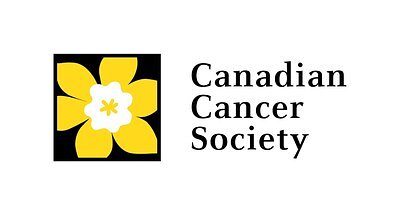
Canada's Cervical Cancer Elimination Goal at Risk as Prevention Efforts Plateau
New data reveals Canada may fall short of its 2040 goal to eliminate cervical cancer, with vaccination and screening rates lagging and widening health inequities. Experts call for urgent action to revitalize prevention programs.
Canada's Cervical Cancer Elimination Goal at Risk as Prevention Efforts Plateau
TORONTO, ON – November 17, 2025 – Canada’s ambitious goal of eliminating cervical cancer by 2040 is facing significant headwinds, according to a new report from the Canadian Cancer Society (CCS) released today. While decades of progress were made in reducing incidence rates, the report reveals a concerning plateau, prompting experts to warn that current prevention efforts are insufficient to meet the 2040 target. The findings underscore the need for a renewed commitment to vaccination, screening, and addressing systemic inequities in access to care.
Stalled Progress and Rising Concerns
The CCS’s Canadian Cancer Statistics 2025 report estimates that 1,650 Canadians will be diagnosed with cervical cancer this year, with 430 dying from the disease. While these numbers represent a decline from peak rates, the stagnation is alarming. “We've seen a slowdown in the rate of decline, and in some regions, we're even seeing increases, especially among younger women,” says one public health researcher. “This isn’t the trajectory we need to be on if we’re serious about elimination.” The report points to lagging HPV vaccination rates, inconsistent screening practices across provinces, and a lack of access to care for vulnerable populations as key drivers of the stalled progress. While HPV vaccination programs have been in place for over a decade, coverage remains uneven, ranging from 16% to 93% across different regions. This wide disparity presents a significant challenge to achieving herd immunity and protecting those who cannot be vaccinated.
The Shift to HPV Primary Screening and Implementation Barriers
Experts agree that transitioning to HPV primary screening – testing for the presence of the human papillomavirus itself rather than relying on Pap tests which look for cellular changes – is crucial. HPV testing is more sensitive and can detect pre-cancerous changes earlier. “HPV testing is a game-changer,” says a gynecologist involved in provincial screening guidelines. “It allows us to identify high-risk individuals more accurately and intervene before cancer develops.” However, the implementation of HPV primary screening has been slow and inconsistent across Canada. Some provinces, like British Columbia and Prince Edward Island, have been early adopters, while others are still in the process of transitioning. “There's a patchwork approach across the country,” explains a healthcare administrator. “We need a nationally coordinated strategy to ensure consistent access to this more effective screening method.” Barriers to implementation include funding constraints, a shortage of trained personnel, and logistical challenges in rolling out new programs. At-home HPV self-sampling, which has shown promise in increasing participation rates, is not yet widely available across the country.
Equity Gaps and Vulnerable Populations
Beyond the technical challenges of implementing new screening programs, significant equity gaps remain in access to cervical cancer prevention services. Individuals from lower-income communities, Indigenous populations, and recent immigrants face disproportionately higher rates of cervical cancer and lower rates of screening. “We see a clear correlation between socioeconomic status and cervical cancer incidence,” says a community health worker. “People who lack access to primary care, have language barriers, or face discrimination are less likely to get screened.” The COVID-19 pandemic exacerbated these inequities, disrupting screening programs and delaying diagnoses. “The pandemic laid bare the existing vulnerabilities in our healthcare system,” explains a public health official. “We need to prioritize outreach and targeted interventions to reach those who are most at risk.” Access to culturally appropriate healthcare, language interpretation services, and affordable transportation are essential to addressing these barriers. The lack of female physicians in rural and remote areas also presents a challenge, as some patients express a preference for a female provider for sensitive procedures like Pap tests. The pandemic also resulted in a 41% decrease in cervical screening tests in Ontario during 2020.
The Path Forward: A Call for Renewed Commitment
The CCS report emphasizes the need for a multi-pronged approach to revitalize cervical cancer prevention efforts. This includes increasing HPV vaccination rates through targeted outreach programs, particularly among adolescents and young adults; accelerating the adoption of HPV primary screening across all provinces and territories; and addressing the social determinants of health that contribute to inequities in access to care. “We need a renewed commitment from all levels of government, healthcare providers, and community organizations to make cervical cancer elimination a reality,” says a representative from the CCS. “This is a preventable cancer, and we have the tools to eliminate it. What we need now is the political will and the resources to make it happen.” Furthermore, increased investment in research is critical to developing new and improved prevention strategies. Innovative approaches, such as the use of artificial intelligence to improve screening accuracy and personalized risk assessment, hold promise for the future. Without a concerted effort to address these challenges, Canada risks falling short of its 2040 goal and leaving a generation vulnerable to this preventable disease.
📝 This article is still being updated
Are you a relevant expert who could contribute your opinion or insights to this article? We'd love to hear from you. We will give you full credit for your contribution.
Contribute Your Expertise →